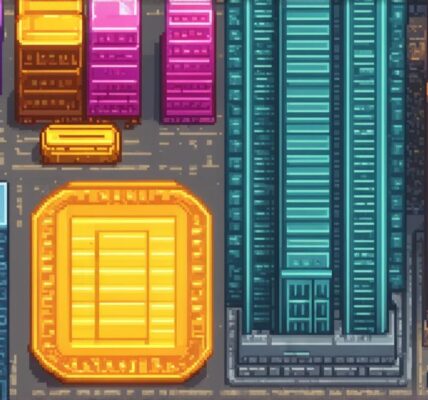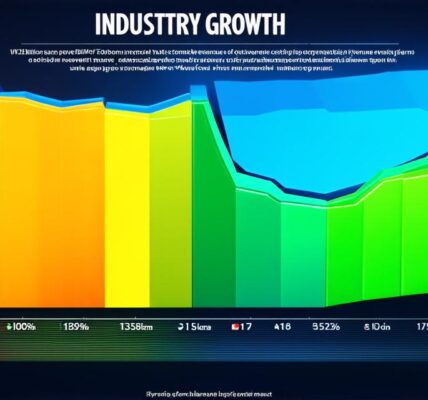As a video game developer, you know that creating a new game is no small task. From conceptualization to testing, each step of the process requires careful planning and execution to ensure success. But one of the most critical questions that every game developer asks themselves is how long it will take to code the game. In this article, we’ll explore the factors that affect the time it takes to code a video game, and provide expert insights and real-life examples to help you estimate your project timeline more accurately.
The Complexity of Game Development
Before diving into the specifics of coding, let’s first understand the complexity of game development. Creating a game requires a team of skilled professionals, each with their own unique set of skills and expertise. From artists and designers to programmers and testers, each person plays a crucial role in bringing your vision to life.
But it’s not just the people involved that make game development complex. Games can be as simple or as complex as you want them to be, and the level of detail required for each component of the game will vary depending on its complexity. For example, a simple 2D platformer might require only a few lines of code to create the player character’s movement mechanics, while a complex open-world action RPG could require thousands of lines of code just for the player character’s movement alone.
The Role of Coding in Game Development
Now that we understand the complexity of game development, let’s take a closer look at the role of coding in the process. While coding may not be the only component of game development, it is undoubtedly one of the most critical. In fact, many people believe that game development is primarily a programming exercise, with art and design serving as secondary functions.
Coding plays a crucial role in creating the core mechanics of the game, such as player movement, combat, and AI behavior. It’s also responsible for rendering the graphics and animations, managing audio and music, and ensuring that everything runs smoothly on different platforms and devices.
The Impact of Game Genre on Coding Time
One of the biggest factors that affects coding time is the genre of the game itself. Different genres require different levels of complexity and functionality, which in turn affect the amount of code required to create them.
For example, a simple 2D platformer might only require a few hundred lines of code, while a complex first-person shooter could require tens of thousands of lines. Similarly, a puzzle game might require minimal coding compared to an action RPG or strategy game, which could require thousands of lines of code each.
The Role of Programming Languages and Tools
Another factor that affects coding time is the programming languages and tools used for development. While there are many programming languages and tools available for game development, some are better suited to certain tasks than others.
For example, C++ is a popular choice for game development due to its speed and performance, but it can be more difficult to learn and use than other languages like Python or JavaScript. Similarly, Unity and Unreal Engine are two of the most popular game engines, but they have different strengths and weaknesses that can affect coding time.
The Impact of Team Size on Coding Time
Finally, team size is another critical factor that affects coding time. While a small team of skilled developers may be able to create a simple game quickly, larger teams with more specialized roles will generally take longer to complete the project.
For example, a team of four programmers working on a complex open-world RPG might take several months to complete the coding phase alone, while a smaller team of two programmers working on a 2D platformer might be able to complete the coding in just a few weeks.
Real-Life Examples of Game Development Timelines
Now that we’ve covered some of the factors that affect coding time, let’s take a look at some real-life examples to see how these factors play out in practice.
The Coding Phase for Portal 2
Portal 2 is a popular puzzle game developed by Valve Corporation. The game required a large team of developers, including programmers, artists, and designers, to create its complex physics-based puzzles and immersive storytelling.
According to Valve’s developers, the coding phase for Portal 2 took around 18 months. This is a relatively long time compared to other games, but it’s important to note that Portal 2 was a highly ambitious project that required a lot of complex code and programming.
The Coding Phase for Minecraft
Minecraft is another popular game that has captured the hearts and minds of players around the world. While Minecraft is a relatively simple game compared to Portal 2, it still required a significant amount of coding to create its block-building mechanics and procedurally generated world.
According to Jens Bergensten, one of Minecraft’s developers, the coding phase for Minecraft took around two years. This is a shorter timeframe than Portal 2, but it’s still an impressive feat considering the complexity of the game and the small team of developers working on it.

The Coding Phase for Fortnite
Fortnite is a popular multiplayer battle royale game developed by Epic Games. The game requires a significant amount of code to manage its complex gameplay mechanics, multiplayer features, and graphics rendering.
According to Epic Games, the coding phase for Fortnite took around three years. This is a relatively long time compared to other games, but it’s important to note that Fortnite is an incredibly successful game with millions of players worldwide.
Expert Insights on Coding Time Estimation
Now that we’ve looked at some real-life examples, let’s hear from some experts in the field to get their insights on coding time estimation.
“Estimating coding time is a complex and often challenging task,” says Mike Cernovich, a game developer and founder of LiquidSky Games. “It requires a deep understanding of the project requirements, the skill level of your team members, and the complexity of the code itself.”
According to Cernovich, there are several factors that developers should consider when estimating coding time, including the experience level of their team members, the amount of existing code they have to work with, and the level of testing and debugging required.
“In my experience, it’s always best to be conservative when estimating coding time,” says Cernovich. “It’s better to underestimate and deliver early than to overestimate and miss your deadline.”
FAQs on Coding Time Estimation
1. How much code does a typical game require?
The amount of code required for a game will vary depending on its complexity and genre. A simple 2D platformer might require only a few hundred lines of code, while a complex open-world action RPG could require tens of thousands of lines.
2. What programming languages and tools are best suited to game development?
There are many programming languages and tools available for game development, but some are better suited to certain tasks than others. Popular choices include C++, Python, Unity, and Unreal Engine.
3. How long will it take my team to complete the coding phase of our game?
The length of time it takes to complete the coding phase will depend on several factors, including team size, experience level, and project complexity. Be sure to estimate conservatively to avoid missing your deadline.
Conclusion
Estimating coding time is a complex task that requires a deep understanding of the project requirements, the skill level of your team members, and the complexity of the code itself. By considering these factors and using real-life examples as guidance, you can develop more accurate estimates and deliver high-quality games on time and within budget.




